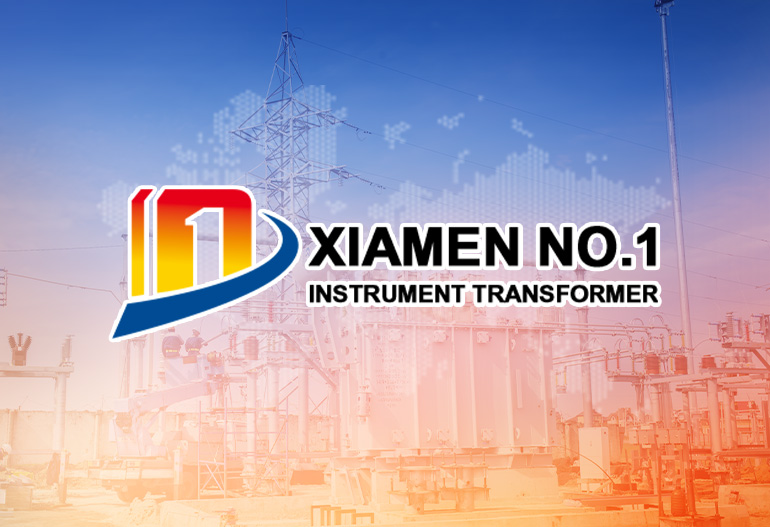In the context of urbanization and the growing demand for efficient land use, compact substations have become a cornerstone of modern power distribution systems. These substations, designed to occupy minimal physical space while maintaining high performance, require specialized components that balance functionality with size constraints. Among these components, voltage transformers (VTs) play a critical role, and the development of space-saving VTs has emerged as a key enabler for compact substation design. This article explores the unique challenges of integrating voltage transformers into compact substations, the innovative technologies driving space-saving designs, and their practical applications in urban and constrained environments.
1. The Need for Space-Saving Voltage Transformers in Compact Substations
Compact substations are engineered to address the limitations of traditional substations, which often require large plots of land, extensive civil works, and significant installation time. In urban areas, where land is scarce and expensive, and in industrial settings where space is at a premium, compact substations offer a viable solution by condensing essential components—including transformers, switchgear, protection devices, and voltage transformers—into a streamlined footprint.
1.1 Drivers of Compact Substation Adoption
Several factors have accelerated the adoption of compact substations:
Urbanization: As cities expand, the demand for power increases, but available land for infrastructure decreases. Compact substations can be installed in confined spaces, such as basements, rooftops, or small utility yards, minimizing their impact on urban landscapes.
Renewable Energy Integration: Distributed energy resources (DERs), such as rooftop solar panels and small wind turbines, require localized substations to connect to the grid. Compact designs enable these substations to be placed close to DERs, reducing transmission losses.
Industrial Efficiency: Manufacturing facilities, data centers, and commercial complexes require reliable power but have limited space for on-site substations. Compact units can be integrated into existing infrastructure without disrupting operations.
1.2 Challenges for Voltage Transformers in Compact Designs
While compact substations offer numerous advantages, they pose unique challenges for voltage transformers:
Space Constraints: Traditional voltage transformers, especially electromagnetic types (EVTs), are bulky due to their magnetic cores and insulation requirements. Fitting them into compact enclosures without compromising performance is a significant engineering challenge.
Thermal Management: Confined spaces restrict airflow, increasing the risk of overheating. Voltage transformers generate heat during operation, and inefficient heat dissipation can degrade accuracy and shorten lifespan.
Installation and Maintenance: Limited access in compact substations makes installation, inspection, and maintenance of VTs more complex. Designs must facilitate easy handling without requiring extensive disassembly.
These challenges have driven the development of innovative voltage transformer technologies specifically tailored for compact environments.
2. Innovative Technologies for Space-Saving Voltage Transformers
The quest for space-saving voltage transformers has led to advancements in materials, design, and manufacturing processes. These innovations aim to reduce size and weight while maintaining or improving accuracy, reliability, and thermal performance.
2.1 Non-Conventional Instrument Transformers (NCITs)
Non-conventional instrument transformers, also known as digital or electronic transformers, represent a significant departure from traditional electromagnetic designs. NCITs eliminate the heavy magnetic core and windings of EVTs, replacing them with solid-state sensors and signal processing electronics. This results in a dramatic reduction in size and weight—typically 50-70% smaller than equivalent EVTs.
There are two main types of NCITs suitable for compact substations:
Optical Voltage Transformers (OVTs): OVTs use the electro-optic effect, where the polarization of light changes in the presence of an electric field. A laser beam is passed through an optical material (such as lithium niobate) exposed to the high voltage, and the resulting polarization shift is measured to determine the voltage level. OVTs have no conductive parts, making them lightweight and immune to EMI.
Electronic Voltage Transformers (EVTs): These use capacitive or resistive voltage dividers to step down high voltages, followed by electronic circuits to amplify and digitize the signal. They are more compact than traditional EVTs and can provide digital outputs directly, integrating seamlessly with automated systems.
2.2 Advanced Materials and Insulation
Materials science has played a crucial role in reducing the size of voltage transformers. New insulation materials with higher dielectric strength allow for reduced insulation thickness, enabling more compact designs:
Silicone Rubber: Used for outdoor insulation, silicone rubber offers excellent weather resistance and flexibility, allowing for smaller, more streamlined casings compared to traditional porcelain insulators.
2.3 Integrated Design and Modularity
Space-saving voltage transformers for compact substations often feature integrated designs that combine multiple functions into a single unit:
2.4 Thermal Optimization
Efficient thermal management is critical for VTs in compact substations. Innovations in this area include:
3. Design Considerations for Compact Substation VTs
Developing space-saving voltage transformers for compact substations requires a holistic approach that balances size, performance, and reliability. Key design considerations include:
3.1 Accuracy and Measurement Range
Despite their small size, VTs in compact substations must maintain high accuracy across a wide range of operating conditions. Standards such as IEC 61869-3 (for electronic voltage transformers) specify accuracy classes (e.g., 0.2, 0.5) that define allowable measurement errors. Designers must ensure that miniaturization does not compromise compliance with these standards, especially for revenue metering and critical protection applications.
3.2 Insulation Coordination
High-voltage insulation is critical to prevent arcing and ensure safety. In compact designs, the distance between live parts and grounded enclosures is reduced, requiring advanced insulation systems. This may involve using SF6 gas, solid dielectric materials, or vacuum insulation, depending on the voltage level (typically up to 145kV for compact substations).
3.3 Electromagnetic Compatibility (EMC)
Proximity to switchgear, transformers, and other high-current devices in compact substations increases EMI exposure. VTs must be designed with shielding (e.g., grounded metal enclosures) and filtering to reject noise. Digital VTs with differential signaling and error-correction algorithms are particularly resilient to EMI, making them suitable for these environments.
3.4 Mechanical Robustness
Compact substations are often prefabricated and transported as complete units, requiring VTs to withstand vibration, shock, and temperature variations during transit and installation. Designs must include rugged casings and secure mounting systems to ensure mechanical integrity.
3.5 Integration with Automation Systems
Space-saving VTs in compact substations are typically part of a fully automated system. They must support digital communication protocols such as IEC 61850, enabling seamless integration with intelligent electronic devices (IEDs), SCADA systems, and remote control centers. Digital outputs eliminate the need for analog-to-digital converters, reducing wiring and further saving space.
4. Applications of Space-Saving VTs in Compact Substations
Space-saving voltage transformers have found widespread application in various compact substation configurations, each tailored to specific environments and requirements.
4.1 Urban Distribution Substations
In densely populated cities, compact distribution substations (typically 10-35kV) are installed in underground vaults, on rooftops, or in small dedicated rooms. Space-saving VTs, such as OVTs or compact CVTs, are essential here. For example, a 20kV compact substation in downtown Tokyo uses optical voltage transformers with a footprint of less than 0.5m², allowing the entire substation to fit within a 4m x 6m underground vault. These VTs provide accurate voltage measurements for both protection and metering, supporting the reliable supply of power to nearby commercial buildings.
4.2 Industrial Compact Substations
Manufacturing plants and industrial parks often use compact substations to power machinery and equipment. These substations require VTs that can withstand harsh environments (e.g., dust, humidity) while saving space. A automotive factory in Germany, for instance, employs modular electronic VTs in a 35kV compact substation. The VTs are integrated with the substation’s switchgear, reducing overall size by 40% compared to a traditional setup. This allows the substation to be placed adjacent to the production line, minimizing cable lengths and energy losses.
4.3 Renewable Energy Connection Points
Compact substations are critical for integrating solar farms, wind turbines, and battery storage systems into the grid. Space-saving VTs here must handle variable voltage levels due to fluctuating renewable generation. A 110kV compact substation connecting a 50MW solar park in Australia uses digital VTs with wide measurement ranges (10-120% of nominal voltage) and fast response times. These VTs enable real-time voltage regulation, ensuring stable grid integration even as solar output varies throughout the day.
4.4 Mobile and Emergency Substations
Temporary or emergency power needs—such as during natural disasters or grid upgrades—require rapidly deployable compact substations. Mobile units, mounted on trailers or skids, use lightweight space-saving VTs to minimize weight and maximize payload. For example, a utility in the United States uses a 25kV mobile substation equipped with electronic VTs that can be transported by truck and operational within hours. The VTs’ small size allows the substation to be deployed in tight spaces, such as disaster-stricken urban areas or remote rural locations.
4.5 Data Center and Critical Infrastructure
Data centers require uninterrupted power with minimal downtime, making compact substations with redundant components essential. Space-saving VTs in these applications are designed for high reliability and easy maintenance. A data center in Singapore, for example, uses redundant electronic VTs in a 11kV compact substation, ensuring continuous voltage monitoring. The VTs’ compact design allows them to be installed in a dedicated compartment within the substation, with front-facing connections for quick replacement if needed.
5. Performance Comparison: Traditional vs. Space-Saving VTs in Compact Substations
To highlight the advantages of space-saving designs, Table 1 compares key characteristics of traditional electromagnetic voltage transformers (EVTs) with modern space-saving alternatives (NCITs, OVTs, and compact CVTs) in compact substation environments:
The table demonstrates that space-saving VTs offer significant advantages in size, weight, and integration capabilities, making them better suited for compact substations. While traditional EVTs remain reliable, their bulk and maintenance requirements make them less practical in space-constrained environments.
6. Challenges and Future Developments
Despite their benefits, space-saving voltage transformers in compact substations face ongoing challenges that drive further innovation.
6.1 Current Limitations
Cost: Non-conventional VTs, especially optical types, are more expensive than traditional EVTs, though prices are declining as production scales.
6.2 Future Trends
7. Conclusion
Space-saving voltage transformers are indispensable components of modern compact substations, enabling the efficient use of space without compromising power system reliability or performance. Through innovations in non-conventional designs, advanced materials, and digital integration, these transformers address the unique challenges of urban, industrial, and renewable energy applications.
As urbanization and renewable energy adoption accelerate, the demand for compact substations will continue to grow, driving further advancements in space-saving VT technology. While challenges such as cost and standardization remain, the benefits—including reduced land use, faster deployment, and seamless automation integration—make these transformers a key enabler of sustainable, resilient power systems.
Utilities and infrastructure planners must consider space-saving VTs as a critical investment in their compact substation projects, balancing upfront costs with long-term efficiency gains. As technology matures and adoption increases, these transformers will play an increasingly vital role in powering the cities, industries, and renewable energy systems of the future.



